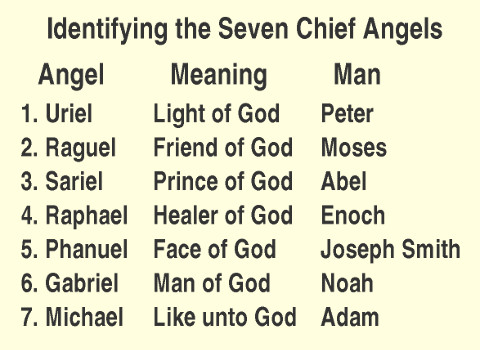
by John P. Pratt
25 Jan 2020, Sea-Goat (S), Hercules (US)
©2020 by John P. Pratt. All rights Reserved.
|
1. Seven Chief Angels 2. Biblical Prophetic Books 2.1 Isaiah 2.2 Jeremiah 2.3 Ezekiel 2.4 Daniel 2.5 Jonah 2.6 Ezra 2.7 Elisha 2.8 David 3. Conclusion Notes |
The concept of multiple mortal probations[1] suggests the probability that the seven chief angels have lived as mortals on earth more than one time each. This is the third article in a series which proposes possible correlations between those seven angels, various religious leaders, and constellations which might represent them. The first article proposed that in the 7x7 table of 49 constellations, each column represents one of the seven angels and the seven constellations in each column may each represent one of their the mortal lives. Moreover, it went on to identify which constellation represented what formerly was considered to have been the only mortal life of each angel (see Table 1).[2] It is recommended to read both of those articles before this one, as it builds on them.
 |
This article attempts to identify the constellations associated with the angels who wrote the great prophetic books of the Bible, as well as other prophets. It proposes eight more constellations which most likely represented those authors.
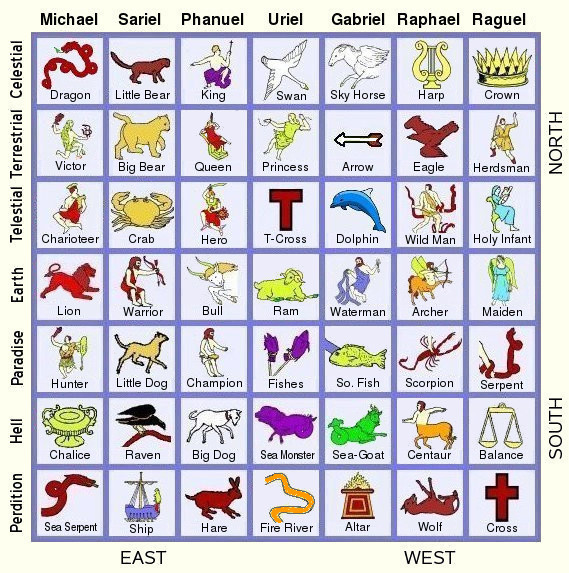 |
Figure 1 shows the 7x7 table of 49 constellations, with the name of one of the seven chief angels at the head of each column. This table is actually a map of the heavens as seen from the northern hemisphere looking south. Thus it has the compass directions listed on the right and bottom. Moreover, each row represents a level of spirituality, with the top rows being the most spiritual or heavenly.
Figure 2 shows the same table without the names of the constellations, which hopefully the reader has memorized by now, and in the place of those names are the names of the first thirteen mortal men identified so far in both earlier articles who were one mortal probation of each of those angels.
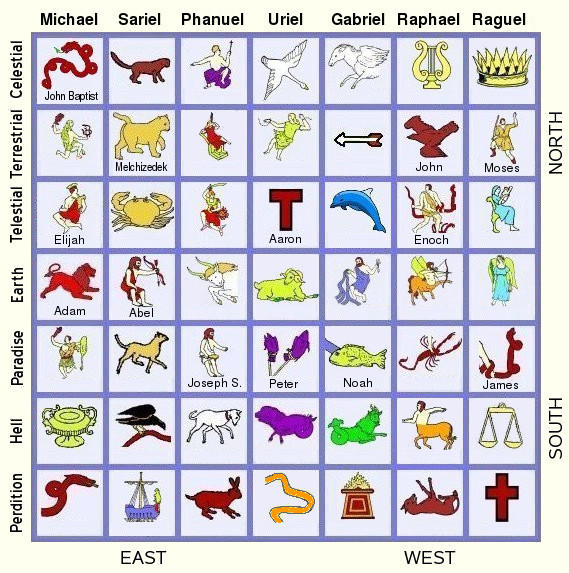 |
Section 1 was a review of the first two articles in this series. Now we turn to identifying eight more constellations associated with the authors of the great prophetic books of the Bible.
Let us now proceed to propose constellations to represent those angels who may have lived a mortal probation to write some of the Biblical books of the prophets. It is important to understand that as we do so there are huge implications included in making these proposals. In particular, each one means that these great men were not just great prophets, but that they were actually separate mortal probations of the seven chief angels of God.
One justification for being bold enough to suggest this is that since it has been discovered that the 49x49 constellation table indeed does represent different men, because the Bible itself implies that John the Baptist was indeed a new probation for the great prophet Elijah, and that they were both incarnations of the archangel Michael. That opens the door for others of those prophets to have been separate probations of the other six chief angels. Let us see if the symbolism of the constellations figures does indeed tie to the author of those great book.
Another point to consider for all of them is that the top row of the chart symbolizes the celestial kingdom of God. In this case, when the seven angels are coming to earth several times to play different roles to aid in the salvation of mankind, they could perform at any level. Involvement in the top row is not a sign of their righteousness, it is a sign of the role itself being one focused on spiritual things. Involvement in the middle row of earth will have more to do with patriarchs and families, and involvement in the bottom rows will have more to do with fighting the forces of evil in the last days in order to rid the world of evil powers in order to prepare for the Millennium. Thus, because God's house is a house of order, we can expect most of the great prophets to occupy positions in the top row of the chart.
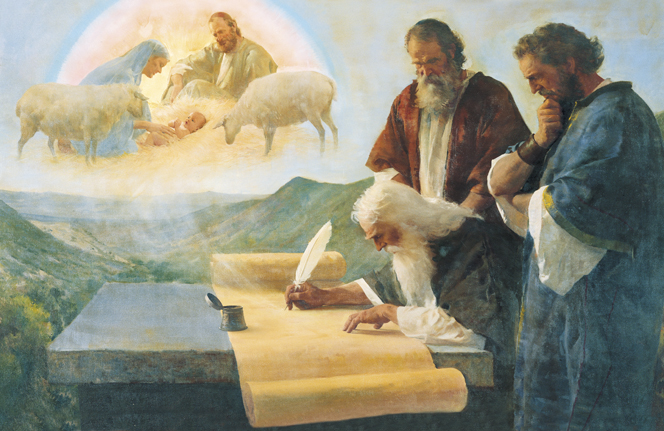 |
Gabriel is the second most important angel and hence a prime candidate to have been Isaiah. His constellation in the top row is the Sky Horse (Pegasus). So now the question is whether there is anything in the life of Isaiah which has to do with that flying horse from heaven, which in the mythology is often bringing a hero down from heaven?
The answer to that question required much pondering on my part to receive, but when it came, it was so clear that all doubt was removed. Moreover, it supplied compelling evidence that this method is indeed correct.
What do we know about Isaiah's life, some aspect of it that sets it apart as unique? For example, Joseph Smith was a great prophet and fulfilled many roles, such as major, army general, seer, dispensation head, etc. But other angels did likewise, so none of those accomplishments were unique. In the earlier article on the subject of the identification of his constellation, what was the unique characteristic of Joseph Smith, that none of the other angels have attributed to them? It was that he was a champion wrestler! And that was emphasized in the myth about Pollux, one of the Twins (Gemini).
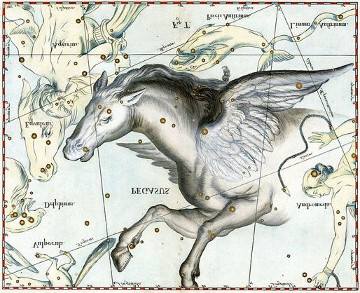 |
The answer is that Isaiah met his death by having been sawed in half[4] and the figure of Pegasus is only of half of a horse! That is such a perfect match as to leave no doubt that the Sky Horse represents Isaiah. That would have been true no matter what square of the 7x7 chart the Sky Horse happened to fall in, but it "just happens" to fall in a slot on the top row for prophets and also in the column for Gabriel! Ever since my first proposed version of this table thirteen years ago, that has been the slot for the Sky Horse because that is where the constellation is located in the heavens.[5] Remember that the table is really just a map of the heavens, as seen facing south from the northern hemisphere.
Thus, the first constellation sought to represent a key prophet of the Bible was totally successful, providing more credence to the whole theory being advanced. It is here proposed that Isaiah was one of several mortal probations of the chief angel Gabriel.
 |
At the very first of his mission, the Lord told him that he was being called and set over nations to root out and tear down and also to plant (Jer. 1:10). The history of his pulling down nations is covered in the Book of Jeremiah, but what about the uprooting and planting (or transplanting)? The ending of his book tells about taking some refugees to Egypt but then it ends there. So where did he do transplanting?
There are many legends which state that Jeremiah took daughters of King Zedekiah to Ireland.[6] This appears to be true, and if so, had a huge impact on the British throne. Of the twelve tribes of Israel, it was Judah who sired the kingly line. His zodiac sign was the Lion (the King of Beasts) and he was promised that the scepter would not depart from his descendants (Gen. 49:9-10).
Judah had twin sons, Zerah, whose emblem was a red hand (because a red thread was tied around his wrist at birth by an astute midwife (Gen. 38:28-30), and Pharez, whose color was white.
King Nebuchadnezzar had all of King Zedekiah's sons killed in front of him in an attempt to destroy his royal line, but the Lord had other plans to keep His promise that the kingly line would not end. The Book of Mormon relates that one infant son was take to the Americas, but these traditions state that Jeremiah took the daughters to marry into the royalty of Ireland, which already had kings from the line of Zerah.
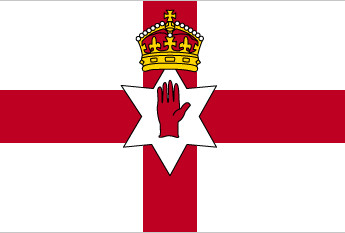 |
So which constellation figure represents a "Deliverer", that is, one who delivers people to a new location, like Moses delivered the Israelites from Egypt to the Promised Land? It is the same concept that a postman delivers letters.
The answer is the Crab (Cancer) who is the one who delivers things from the evil sea to the more righteous dry land. When the zodiac constellations are referring to Christ, His role as Deliverer (of captives in hell) is represented by the Crab.
Thus, it is proposed that the Crab constellation symbolizes the prophet Jeremiah. And the fact that Cancer is one of the twelve zodiac constellations is an even better location than the top row for those who were principally prophets. The zodiac figures probably comprise the twelve most important figures because they are in the center of the celestial sphere, through which all of the sun, moon, and planets travel.
 |
What constellation represents heaven, which could represent Ezekiel? The harp is the symbol of heaven, where some angels do indeed play harps (Rev. 5:8).
Thus, it proposed that the Harp (Lyra) is the constellation representing Ezekiel because no other prophet focused so much on heavenly topics.
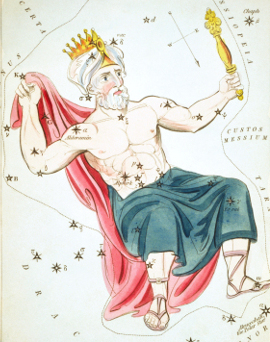 |
Joseph is not listed among the great prophets partly because whatever he prophesied did not get included in the Hebrew canon of scripture. Besides him, none of the other prophets became rulers of a country.
There are two constellations on the top prophetic row which might represent a king. One is called the King (Cepheus) and the other is the Crown (Corona), which refers to an actual king's crown. So how do we know which one is correct for Daniel?
 |
Thus, since the constellation actually depicts a Shah-type king, it is proposed that the King (Cepheus) represents the prophet Daniel.
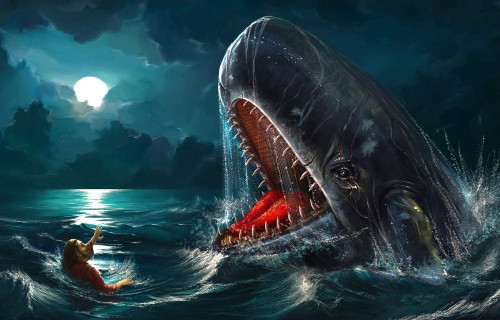 |
There are several fish among the constellations, but there is one which seems to represent resurrection. It is the Dolphin (Delphinus) which is depicted as jumping high out of the water. In the heavenly symbolism, the waters represent death and evil in the underworld, whereas the heavens represent righteous, godly places. Thus, resurrection can be represented by a sea creature jumping up into the sky.
Thus, it is proposed that the Dolphin represents the prophet Jonah.
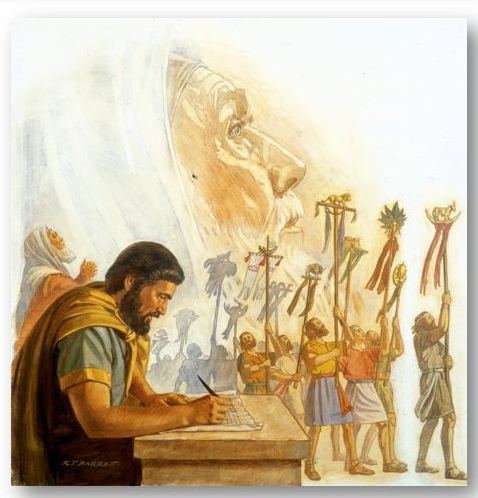 |
The answer is twofold. First he did indeed write an important book of prophecy which was not included by the Jews themselves in their canon. The Greeks accepted it, so it has ended up in what is now called the Apocrypha. That is the set of those books which were in the King James Bible, but which Martin Luther decided to put in a separate section (the Apocrypha) which eventually got dropped out of the Bible entirely.
The book is called Second Esdras (Greek for Ezra) or Fourth Ezra. That book alone could qualify him.
Second, he was almost certainly the author of much of the Old Testament, as described in the that book. Who wrote the books of Samuel, Kings, and Chronicles? About the only name suggested for that task is Ezra.
In the vision of Nephi he saw that the gentile Pilgrims who came to America carried with them a book that "proceedeth out of the mouth of a Jew" (1 Nephi 13:23). It does not say "came forth from the Jews". So who was that Jew? If one is required to supply the name of one person, it would probably be Ezra. In fact, the book Second Esdras explains that Ezra dictated those books to scribes who wrote what he said in a new square shaped Hebrew letters, which replaced the former alphabet. So, much of the Old Testament indeed proceeded forth from his mouth!
One other candidate worth considering is Malachi, who was important enough that the Lord recited two chapters of that book to the Nephites (3 Nephi 24-25) because he had lived after they had left Jerusalem. But many Jewish scholars and rabbis believe that Malachi is a title which was given to Ezra. "Malachi" means "My messenger" and the book speaks much of "my messenger" who will precede both the first and second comings of Christ to prepare the way for Him. So the name could have been taken from the book itself, as was the case with many books of the Bible. If Ezra was indeed the man to close the Jewish canon, he might have been humble enough not to have put his name on the book.
Thus, if Ezra indeed has a constellation, which one would it be? Ezra was called "Ezra the Scribe" , and indeed he was a prolific scribe. Throughout the ages, scribes often used a goose quill as a pen. The word "pen" derives from the word for "quill". One of the stars in the tail of the Swan (Cygnus) is named "Quill". It was given that name because of Enoch the Scribe: his city of Zion was founded in the year named for that star.
Thus, it is proposed that the constellation of Ezra is the Swan.
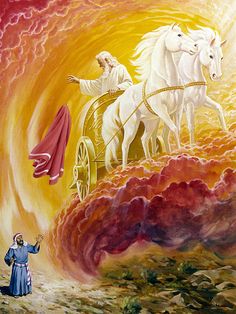 |
It is for only one reason: one event in his life is such a perfect match for one of the constellations that it seemed too good to pass up.
Elisha was bald and one day some youth publicly teased him about it. He cursed them in the name of the Lord, and two she bears came out of the woods and mauled 42 of them (2 Kings 2:23-24). Now why was that story included in the account being written by Ezra, and why would he include the detail that they were she bears? And just who was it who noticed that detail? If you saw bears mauling a bunch of youth, would you be concerned about whether or not they were female bears? And would have known how to tell the difference? This event was indeed unique among events in the lives of the prophets, but for some reason this story is not told much in children's Sunday School classes!
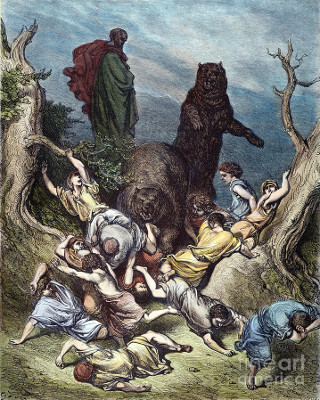 |
Thus, based on nothing more than that peculiar detail, and the fact that the Big Bear appears to represent Melchizedek, it is proposed that the constellation of the Little Bear represents the prophet Elisha.
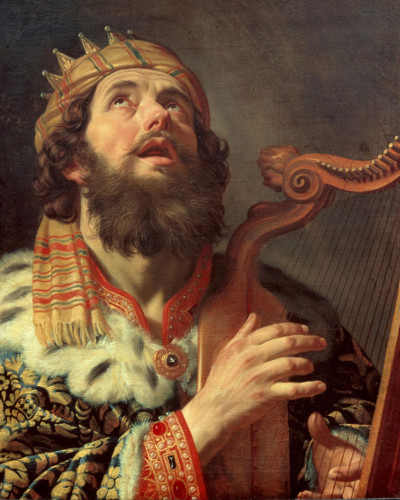 |
Jesus made a huge point that He was the son (legal descendant) of David, and the scribes knew that Jesus was to be the son of David. David is a towering figure in the Old Testament. Could the Crown (Corona Borealis) constellation possibly refer to King David. What other King was a great prophet to qualify as a candidate for that position?
Putting David in that slot would mean that his spirit was Raguel who was also the spirit of Moses. Could that have been true? It may be interesting to note here that for a few decades Moses was king of Ethiopia, which was when he had the Ethiopian wife (Num. 12:1). His reign there is discussed in detail in the Book of Jasher. The Bible skips the years between his fleeing Egypt and arriving in Midian. He is suddenly 80 years old when he begins the journey to delivers the captive Israelites from Egypt. Moses was also raised in the court of Pharaoh, with all of the training to be a king.
Like that of Elisha, this identification is not as strong as the others, yet it seems solid enough to at least merit proposing that the constellation of the Crown represents David the King.
This article is the third in a series which attempts to identify constellations which represent the mortal lives of some of the seven chief angels. It focuses on those who were great prophets, especially those who authored the great Old Testament prophetic books.
By following the requirement that something during the mortal life should tie in some way to the constellation, eight new constellations were added to the previously found thirteen, for a total of twenty-one so far. The eight are as follows: Isaiah is the Sky Horse (Pegasus), Jeremiah is the Crab (Cancer), Ezekiel is the Harp (Lyra), Daniel is the King (Cepheus), Jonah is the Dolphin (Delphinus), Ezra is the Swan (Cygnus), Elisha is the Little Bear (Ursa Minor) and King David, author of Psalms, is the Crown (Corona). These new additions are shown in red in Figure 3.
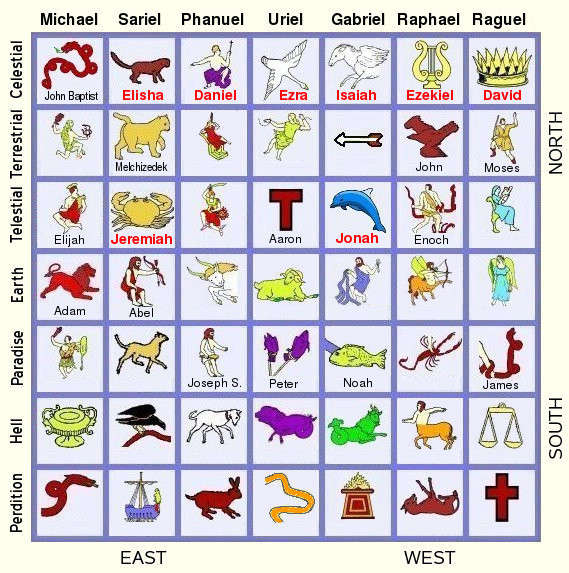 |
These constellations were truly inspired when revealed long ago to Enoch the Prophet by the angel Uriel. They help us to understand the foreknowledge and depth of the plan of salvation provided for us by a loving God.